

Find Soundproofing Products for Your Flooring
Is unwanted noise traveling through your floors? You can effectively soundproof a floor by installing underlayments, adding density, creating structural isolation or decoupling the floor.
At Soundproof Cow, we carry a variety of flooring underlayment and materials to soundproof flooring in your home, office, or business. Shop soundproofing options for a variety of flooring types:
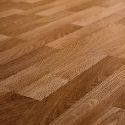 Floor Soundproofing Products
Floor Soundproofing Products

Floor Soundproofing Products - Carpet
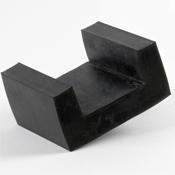
Floor Joist Isolators (Case of 100)
$375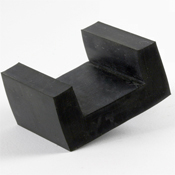
Floor Joist Isolators (Case of 50)
$187.5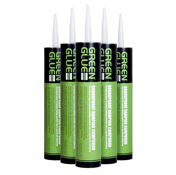
Green Glue Noiseproofing Compound (Case of 12)
$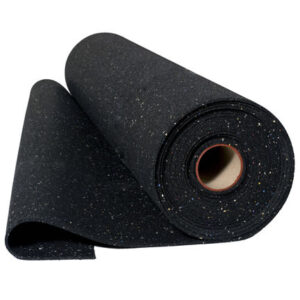
Impact Barrier QT Flooring Underlayment
$175.99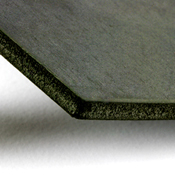
Quiet Barrier® HD (w/PSA) Soundproofing Material (Sheet)
$230.99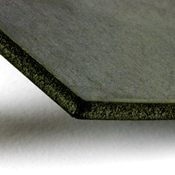
Quiet Barrier® HD Soundproofing Material (Sheet)
$145.99 $137.99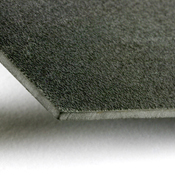
Quiet Barrier® MD (w/PSA) Soundproofing Material (Sheet)
$139.99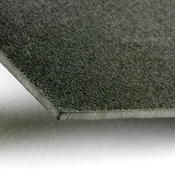
Quiet Barrier® MD Soundproofing Material (Sheet)
$74.99 $68.99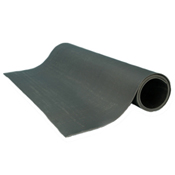
Quiet Barrier® HD Soundproofing Material (Roll)
$398.09 $388.09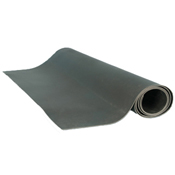
Quiet Barrier® MD Soundproofing Material (Roll)
$194.03
Floor Soundproofing Products - Hardwood

Floor Joist Isolators (Case of 100)
$375
Floor Joist Isolators (Case of 50)
$187.5
Green Glue Noiseproofing Compound (Case of 12)
$
Impact Barrier QT Flooring Underlayment
$175.99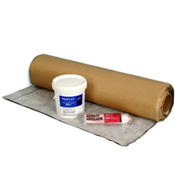
PROFLEX™ 90
$249.99
Quiet Barrier® HD (w/PSA) Soundproofing Material (Sheet)
$230.99
Quiet Barrier® HD Soundproofing Material (Sheet)
$145.99 $137.99
Quiet Barrier® MD (w/PSA) Soundproofing Material (Sheet)
$139.99
Quiet Barrier® MD Soundproofing Material (Sheet)
$74.99 $68.99
Quiet Barrier® HD Soundproofing Material (Roll)
$398.09 $388.09
Quiet Barrier® MD Soundproofing Material (Roll)
$194.03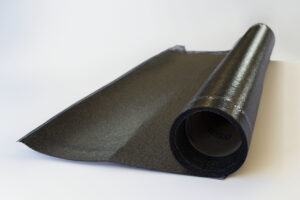
Step Above Flooring Underlayment
$49.75
Floor Soundproofing Products - Ceramic Tile

Floor Joist Isolators (Case of 100)
$375
Floor Joist Isolators (Case of 50)
$187.5
Green Glue Noiseproofing Compound (Case of 12)
$
Impact Barrier QT Flooring Underlayment
$175.99
PROFLEX™ 90
$249.99
Quiet Barrier® HD (w/PSA) Soundproofing Material (Sheet)
$230.99
Quiet Barrier® HD Soundproofing Material (Sheet)
$145.99 $137.99
Quiet Barrier® MD (w/PSA) Soundproofing Material (Sheet)
$139.99
Quiet Barrier® MD Soundproofing Material (Sheet)
$74.99 $68.99
Quiet Barrier® HD Soundproofing Material (Roll)
$398.09 $388.09
Quiet Barrier® MD Soundproofing Material (Roll)
$194.03
Floor Soundproofing Products - Laminate

Floor Joist Isolators (Case of 100)
$375
Floor Joist Isolators (Case of 50)
$187.5
Green Glue Noiseproofing Compound (Case of 12)
$
Impact Barrier QT Flooring Underlayment
$175.99
Quiet Barrier® HD (w/PSA) Soundproofing Material (Sheet)
$230.99
Quiet Barrier® HD Soundproofing Material (Sheet)
$145.99 $137.99
Quiet Barrier® MD (w/PSA) Soundproofing Material (Sheet)
$139.99
Quiet Barrier® MD Soundproofing Material (Sheet)
$74.99 $68.99
Quiet Barrier® HD Soundproofing Material (Roll)
$398.09 $388.09
Quiet Barrier® MD Soundproofing Material (Roll)
$194.03
Step Above Flooring Underlayment
$49.75Soundproofing Existing Floors vs. New Construction Floors
Floor soundproofing is key to reducing noise and improving sound quality in any space. If you’re thinking about soundproofing a floor, the first thing you need to consider is whether or not you have subfloor access. The subfloor is the foundational layer beneath the flooring surface, and being able to access it plays a vital role in determining the kind of soundproofing you can accomplish.
How to Soundproof Existing Floors
With existing floors, you may be limited when it comes to subfloor access. If you are unable to remove your current flooring or have no intention of changing it, there are a number of alternatives you can use to soundproof your existing floors. Some options include:
- Using carpet or rug padding: You can use a thick pad to soften the impact noise that comes from footsteps. Carpet padding is generally placed under a carpet and works by absorbing sound.
- Using underlayment: You can lay down a layer of underlayment and install flooring over it to absorb impact vibrations and block airborne sound. Our high-quality Impact Barrier QT Flooring Underlayment is easy to install, with various thickness options available to suit your needs. Step Above Flooring Underlayment is another option we offer for hardwood, laminate, and engineered flooring systems.
How to Soundproof New Construction Floors
New construction floors provide greater opportunities for soundproofing because they allow subfloor access, giving you more options to work with. You can follow these basic steps to soundproof a floor:
- Create Structural Isolation: The first step involves disconnecting the upper level from the bottom one. Separating the ceiling and flooring from the structure of the building is key to preventing noise transfer. To create the disconnect, you have to either raise the surface of the floor or lower the ceiling. When the is no contact between these surfaces and the structure, the noise vibrations will dissipate in the assembly.
- Add density: The second step involves lining the assembly with material that adds density. When your flooring has additional density, vibrations that come from noise will be reduced. You can achieve this effect by lining the flooring surface or the ceiling below your floor with underlayment. Our Impact Barrier QT Flooring Underlayment is the perfect option for floor soundproofing. This versatile underlayment can be used on a variety of floors, from tile to hardwood. When installed on your flooring, it softens sounds and reduces noise transfer from one room to another.
- Complete the process: The last step comes after the underlayment is placed on the subfloor. Add the finished floor surface on top of the underlayment, and your floor soundproofing is complete.
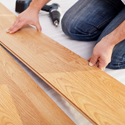 Floor Soundproofing Assemblies
Floor Soundproofing Assemblies
Floor Soundproofing Assemblies
When installing hardwood floorboards, you can use nails, glue or both. Nails transmit noise to the subfloor, so if possible, gluing is a better option. No matter the type of application, a flooring underlayment will treat your room’s noise issues.
For glue-down or nail-down hardwood floors, we recommend PROFLEX™ 90. Constructed of a rubberized membrane laminated to high strength, reinforcing fabric on the face and a siliconized release sheet on the adhesive side, this product is perfect for finished hardwood floors. It’s waterproof, has a vapor-protected membrane and eliminates cracks.
For floating hardwood flooring, Impact Barrier® Flooring Underlayment is the most effective floor soundproofing material. As the most technologically advanced sound blocker available for hardwood, it will not only efficiently reduce footfall impact noise, but it also has a membrane that resists moisture, mold and mildew.
Laminate or composite floating floors cause two major noise issues — impact noise transmission and echoing within a room. You can significantly reduce both these problems by using Impact Barrier® Flooring Underlayment. An added benefit is the vapor barrier that helps protect the floor from moisture. Like other underlayments, you can apply it to the subfloor below the finished layer.
Ceramic tile and stone can be the most challenging to soundproof because you must install the floor at an even level. We created our products with this in mind.
We specially engineered our PROFLEX 90 MSC Flooring Underlayment product for use under thin-set and mud-set mortar, making it an ideal floor soundproofing solution for tile and stone. Also, it prevents cracking, a common problem with this type of flooring material.
PROFLEX 90 MSC Flooring Underlayment will remain flush with the subfloor when installed correctly. After the underlayment is in place, you can lay the ceramics or stone. You won’t see it’s there, but you’ll hear the difference — improved sound quality and reduced sound transmission. Carpeting alone helps reduce footfall noise, but it can’t compete with airborne noise transmission through the floor. Some rooms, such as music practice rooms, home theaters or recording studios, have considerable airborne noise problems.
Using a thick barrier fiber composite will reduce noise leakage through the floor. It will also prevent unwanted sounds from entering from the rooms below.
We recommend Impact Barrier® Flooring Underlayments, made from the best, most consistent materials available.
Shop flooring underlayment and other soundproofing materials for your carpet, hardwood, ceramic tile and laminate floors today.
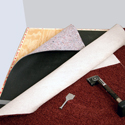 Soundproofing Your Floor Is Easy
Soundproofing Your Floor Is Easy
Soundproofing Your Floor Is Easier Than You Think
Unless you’ve got a college student living in your basement who has the sleeping habits of a bat and likes to party at midnight, the necessity for soundproof flooring usually stems from unwanted vibrational noise that comes from the house itself rather than exterior noise. For instance, soundproofing materials for floors tend to focus on reducing structural and vibration sound transmissions such as creaks, squeaks, rattles and odd noises sometimes attributed to a house “settling.”
Soundproof Cow offers various effective and affordable soundproof flooring products, including thermoplastic floor joist isolators specifically for improving your flooring assembly’s Sound Transmission and Impact Insulation Classes. Floor joist isolators decouple flooring from structural supports to reduce sound transmission, particularly lower-frequency sounds that are challenging to control.
Another easy way to soundproof your flooring (and keep the peace in your home) is with our popular PROFLEX™ 90 underlayment designed for use under hardwood, stone and tile floors. PROFLEX™ 90 reduces not only the intensity of footfall noises but also voice, TV and stereo noise. In addition, you can use this special soundproofing material in areas where moisture is a concern.
Outperforming plastics and roofing membranes with regard to noise-proofing and sound reduction, Impact Barrier QT provides some of the highest IIC rating improvements while offering excellent, anti-fracture crack bridging qualities. Many of our customers have rated it as the perfect soundproof flooring product for hotels, high-rises, condos, family homes, apartment and office buildings. Impact Barrier QT is ideal for use under marble, stone, ceramic tile, brick, carpet and laminate/hardwood/engineered wood.
If you have questions about how to soundproof floors, we have the answers you’ll be happy to hear. Call us today at 866-949-9269 or contact us online.
Floor Soundproofing Treats Two Types of Noise
The result of people walking on the floor. Footfall causes vibrations in the floor. And these vibrations spread through the floor, into joists, and then pass through the ceiling of the room below.
The sound that travels through the air, whether it’s people talking, a loud TV or thumping music.
Soundproofing a Floor
Hardwood floorboards can be nailed, glued, or both. Nails transmit noise to the subfloor, so if possible, gluing is a better option. No matter the type of application, a flooring underlayment will treat your room’s noise issues.
For glue-down or nail-down hardwood floors, we recommend PROFLEX™ 90. Constructed of a rubberized membrane laminated to a high strength, reinforcing fabric on the face, and a siliconized release sheet on the adhesive side, this product is perfect for finished hardwood floors. It’s waterproof, has a vapor protected membrane, and eliminates cracks.
For floating hardwood flooring, Impact Barrier® Flooring Underlayment is the most effective floor soundproofing material. It’s the most technologically advanced sound blocker available for hardwood. Not only will it efficiently reduce footfall impact noise, it also has a membrane that resists moisture, mold and mildew.
Laminate or composite floating floors cause two major noise issues: impact noise transmission and echoing within a room. Both of these problems can be significantly reduced by using Impact Barrier® Flooring Underlayment. An added benefit is the vapor barrier that helps protect the floor from moisture. Like other underlayments, it can be applied to the subfloor below the finished layer.
Ceramic tile and stone can be the most challenging to soundproof because the floor must be installed at an even level. Our products were created with this in mind.
PROFLEX 90 MSC Flooring Underlayment was specially engineered for use under thin-set and mud-set mortar, making it an ideal floor soundproofing solution for tile and stone. Also, it prevents cracking, a common problem with this type of flooring material.
PROFLEX 90 MSC Flooring Underlayment will remain flush with the subfloor when installed correctly. After the underlayment is in place, the ceramics or stone can be laid evenly. You won’t see it’s there, but you’ll hear the difference: improved sound quality and reduced sound transmission.
Carpeting alone is helpful in reducing footfall noise, but it can’t compete with airborne noise transmission through the floor. Some rooms, such as music practice rooms, home theaters or recording studios, have major airborne noise problems.
Using a thick barrier fiber composite will reduce noise leakage through the floor. It will also prevent unwanted sound from entering via the rooms below.
We recommend Impact Barrier® Flooring Underlayments, which are made from the best, most consistent materials available. Not only is it the most effective soundproofing material, it will also prolong the life of your carpet.
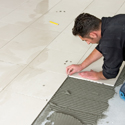 How To Soundproof Anything
How To Soundproof Anything

I just wanted to send a quick thank you for your rapid response and helpfulness. I very much appreciated it. You have been responsive in every way all through the process. It has been a pleasure doing business with you and your company.
- T. Alexander



